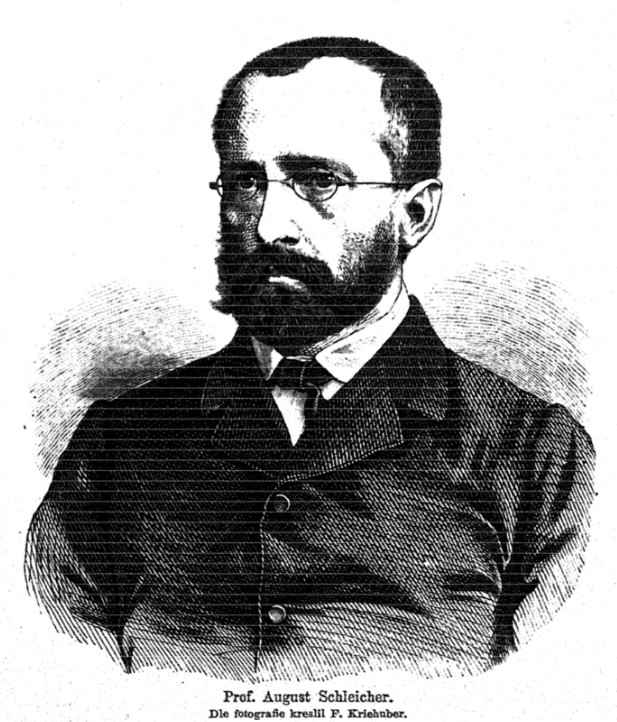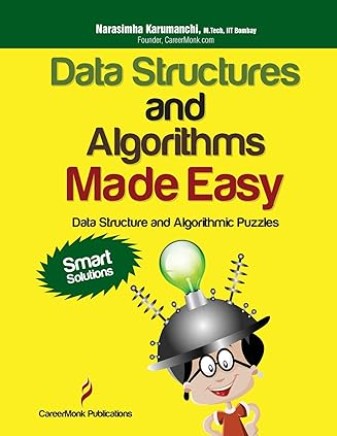Introduction
A tree is a fundamental data structure in computer science and algorithms.
It is a hierarchical structure that resembles an inverted tree, with a single root node at the top and branching nodes connecting to child nodes, forming a tree-like structure.
Each node in a tree can have zero or more child nodes, and it is used to represent hierarchical relationships, organize data, and solve various computational problems.
Trees are a crucial component in many algorithms and data structures, and they come in various forms, each with its unique structure and properties.
Tree model was proposed by August Schleicher, a German Linguist in 1853.

.
Structure of a Tree
A tree comprises several key components

.
Root – The topmost node in the tree is called the root. It serves as the starting point and provides the entry to the tree.
Node – Each element in the tree is a node. A node contains data or information and links to its child nodes, if any.
Edge – An edge is a connection between nodes that defines the relationship between them.
Parent Node – A parent node is a node that has one or more child nodes connected to it.
Child Node – A child node is a node connected to a parent node. It is the result of a branching or subdivision from the parent.
Leaf Node – A leaf node is a node with no children. It is the terminal node in a tree, and its purpose is to store or represent data.
Subtree – A subtree is a smaller tree that is part of a larger tree. It consists of a parent node and all of its descendants.
Level – The level of a node represents its position in the tree. The root node is at level 0, its children are at level 1, and so on.
Depth – The depth of a tree is the length of the longest path from the root to a leaf node.
.
In algorithms and data structures, there are various types of trees, each designed to solve specific computational problems efficiently. Here are some of the most common types of trees in algorithms.
Types of Trees
Binary Tree
A binary tree is a tree structure where each node has at most two children, typically referred to as the left child and the right child.
Common operations on binary trees include insertion, deletion, and traversal (in-order, pre-order, and post-order).
.
Binary Search Tree (BST)
A binary search tree is a binary tree where the left child of a node contains values less than or equal to the node’s value, and the right child contains values greater than the node’s value.
BSTs allow for efficient searching, insertion, and deletion with an average time complexity of O(log n) when balanced.
.
Balanced Binary Tree
Balanced binary trees, such as AVL trees and Red-Black trees, maintain their balance during insertions and deletions.
They provide O(log n) time complexity for various operations and are commonly used for ordered data storage.
.
Binary Heap
A binary heap is a specialized binary tree used for efficient priority queue operations, such as finding the minimum or maximum element.
Binary heaps can be either min-heaps or max-heaps and are commonly used in algorithms like Dijkstra’s algorithm and heap sort.
.
Trie (Prefix Tree)
A trie is a tree structure used for efficiently storing and searching strings. It is particularly useful for tasks like autocomplete and spell checking.
Each node in a trie represents a single character, and the path from the root to a node forms a string.
.
N-ary Tree
An n-ary tree is a tree in which each node can have more than two children. The number of children is not limited to two, and it can be any positive integer.
N-ary trees are used in various applications, including hierarchical data storage and representation.
.
B-Tree
B-trees are self-balancing tree structures designed for efficient disk access and storage management. They are commonly used in databases and file systems.
B-trees maintain their balance and have a variable number of children per node.
.
Ternary Search Tree (TST)
A ternary search tree is a type of tree that combines the properties of a binary search tree and a trie.
It is used for storing and searching for strings, especially for spell checking and text search algorithms.
.
Segment Tree
A segment tree is a tree structure used for efficiently solving range query problems on an array, such as finding the minimum, maximum, or sum of elements in a specified range.
Segment trees are used in various applications, including competitive programming and computational geometry.
.
Suffix Tree
A suffix tree is a compressed trie used for efficient substring searches and pattern matching in a given text.
Suffix trees are widely used in string processing and text indexing.
.
Radix Tree (Trie)
A radix tree, also known as a radix trie or compact prefix tree, is a tree structure used to store a fixed set of strings efficiently.
It is used in applications like IP routing and string dictionaries.
.
Threaded Binary Tree
A threaded binary tree is a binary tree with additional pointers that allow for efficient in-order traversal without using a stack.
Threaded binary trees can be used to improve the efficiency of certain operations on binary trees.
.
Advantages of Trees
- Hierarchical Representation – Trees are excellent for representing hierarchical relationships, such as file systems, organizational structures, and family trees
- Efficient Searching – Binary search trees (BSTs) provide efficient searching, insertion, and deletion operations with a time complexity of O(log n) on average.
- Ordered Data Storage – Trees like AVL and Red-Black trees keep data in sorted order, making them suitable for applications that require ordered data.
- Quick Retrieval – Trees with balanced structures provide fast retrieval of data, making them useful for database indexing and dictionaries.
- Graph Representation – Trees can be used to represent graphs, facilitating graph algorithms and traversal techniques.
Disadvantages of Trees
- Space Overhead – Trees can have additional memory overhead due to the storage of pointers or references between nodes.
- Complexity – Some tree operations, like rebalancing a self-balancing tree, can be complex to implement and maintain.
- Non-Balanced Trees – In the worst case, certain tree structures, such as a degenerate binary tree, can have a time complexity of O(n), making them inefficient for some operations.
- Inefficient for Ordered Lists – Trees may not be the best choice for simple ordered lists; arrays or linked lists can be more space and time-efficient.
- Implementation Challenges – Designing and implementing tree structures can be challenging, especially for self-balancing trees.
Application of Trees
Computer Science
- File Systems – Trees are used to represent the hierarchy of files and folders in a computer’s file system. Each folder can contain files and other folders, forming a tree-like structure.
- Database Systems – In databases, trees can represent hierarchical data, such as organizational charts or product categories.
- Binary Search Trees (BST) – BSTs are used for efficient searching, insertion, and deletion operations. They are commonly used in search algorithms and symbol tables.
Artificial Intelligence
- Decision Trees – In machine learning, decision trees are used to model decisions based on input data. They are often used in classification tasks, such as determining whether an email is spam or not.
- Game Trees – In game theory and AI, trees represent possible moves and outcomes in games like chess or tic-tac-toe, helping AI agents make strategic decisions.
Networking
- Routing Tables – Trees can be used to represent routing tables in networking protocols like OSPF (Open Shortest Path First) and BGP (Border Gateway Protocol), helping routers determine the best path for forwarding packets.
- XML and HTML Parsing – Trees are used to represent the hierarchical structure of XML and HTML documents, making it easier to parse and manipulate their contents.
Biology
- Phylogenetic Trees – Biologists use trees to represent the evolutionary relationships between different species. These trees show how species are related to each other through common ancestors.
- Ancestry and Genealogy – Trees are used to represent family trees and ancestry, showing the relationships between ancestors and descendants.
Language and Linguistics
- Syntax Trees – In linguistics and computer science, trees represent the syntactic structure of sentences. They help analyze the grammatical structure of sentences in natural language processing tasks.
- Lexical Trees – Trees can be used to efficiently store and search for words in dictionaries and lexicons.
Test Yourself
Q1- What is the significance of the root node in a tree data structure?
The root node is the topmost node in a tree, serving as the entry point. It connects all other nodes in the tree and represents the starting point for traversing the tree.
Q2- How does a binary search tree (BST) maintain its order of elements, and what is the time complexity of searching in a balanced BST?
In a BST, the left child of a node contains values less than or equal to the node’s value, and the right child contains values greater than the node’s value. Searching in a balanced BST has an average time complexity of O(log n).
Q3- What are the advantages of using a trie data structure for string-related tasks, such as autocomplete or spell checking?
Tries are efficient for string-related tasks because they store characters in a tree structure, enabling quick and space-efficient string searching and matching.
Q4- Explain the concept of depth and level in a tree. How are they related to the tree’s structure?
Depth is the length of the longest path from the root to a leaf node. The level of a node represents its position in the tree, with the root at level 0, its children at level 1, and so on.
Q5- What challenges can be associated with implementing self-balancing trees like AVL trees or Red-Black trees?
Implementing self-balancing trees can be challenging due to the complexity of ensuring that the tree maintains balance during insertions and deletions, which involves multiple rotations and updates.
Q6- How do B-trees address the problem of efficient disk access and storage management, and in what applications are they commonly used?
B-trees maintain balance and have a variable number of children per node, making them suitable for efficient disk access and storage management. They are commonly used in databases and file systems.
Q7- How is the depth of a tree related to its structure?
1. Depth represents the number of children a node has.
2. Depth is the length of the longest path from the root to a leaf node.
3. Depth is the same as the level of a node.
4. Depth is not relevant in tree structures.
Ans – (2)
Explanation – Depth is the length of the longest path from the root to a leaf node.
Q8- Which data structure is commonly used in databases and file systems for efficient disk access and storage management?
Binary Search Tree (BST)
Trie
B-Tree
Ternary Search Tree (TST)
Ans – (3)
Explanation –
Q9- In a balanced binary heap, what operations can be performed efficiently?
1. Searching for an element in any position
2. Finding the minimum or maximum element
3. Sorting elements in O(n log n) time
4. Inserting elements at the end of the heap
Ans – (2)
Explanation – Binary heaps are used for finding the minimum or maximum element efficiently.
Q10- What is the primary purpose of a leaf node in a tree structure?
1. To connect multiple subtrees
2. To balance the tree
3. To store or represent data
4. To serve as the root node
Ans – (3)
Explanation – Leaf nodes in a tree primarily serve to store or represent data.
Q11- How does a threaded binary tree improve efficiency in certain operations?
1. By reducing the tree’s height
2. By enabling efficient searching
3. By allowing in-order traversal without a stack
4. By simplifying tree rotation operations
Ans – (3)
Explanation – Threaded binary trees improve efficiency by allowing in-order traversal without a stack.
Q12- In what applications is a radix tree (compact prefix tree) commonly used?
1. Document editing software
2. Video game development
3. IP routing and string dictionaries
4. Social media platforms
Ans – (3)
Explanation – Radix trees are commonly used in IP routing and string dictionaries.






